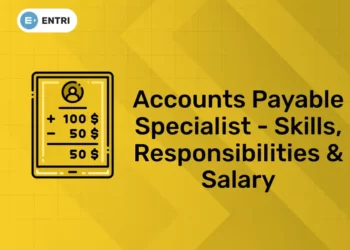Table of Contents
In today’s fast-paced business world, technology plays a vital role in business growth and efficiency. Enterprise Resource Planning (ERP) software has proven to be a game-changer for retail businesses of all sizes, enabling them to streamline operations and achieve better results. According to the latest statistics, 64% of companies plan to implement ERP in the next three years. ERP provides control and tracking of all business resources and is typically used by salespeople, accountants, supply chain personnel, marketing executives, and others.
What Is Enterprise Resource Planning (ERP)?
Enterprise resource planning (ERP) is a platform that companies use to manage and integrate the core parts of their business. Many ERP software applications are critical to companies because they help them implement resource planning by integrating all the processes needed to run their companies into a single system.
An ERP software system can also integrate planning, inventory purchasing, sales, marketing, finance, human resources, and more.
Understanding Enterprise Resource Planning (ERP)
You can think of an enterprise resource planning system as the glue that binds the various computer systems of a large organization together. Without an ERP application, each department would have its own system optimized for its specific tasks. With ERP software, each department still has its own system, but all systems can be accessed through a single application with a single interface.
What Does ERP Do?
ERP applications also allow different departments to more easily communicate and share information with the rest of the company. It collects information about the activity and status of various divisions and makes this information available to other parts where it can be used productively.
ERP applications can help a company gain more confidence by connecting information about production, finance, distribution and human resources. Because it connects the different technologies used by each part of the business, an ERP application can eliminate costly duplicates and incompatible technologies. This process often integrates accounts payable, inventory management systems, order tracking systems, and customer databases into one system.
How Does It Work?
ERP has evolved over the years from traditional software models that used physical client servers and manual entry systems to cloud-based software with remote web access. The platform is generally managed by the company that created it, with client companies renting the services provided by the platform.
Businesses choose the apps they want to use. After that, the hosting company uploads the applications to the server that the client rents, and both parties start working to integrate the client’s processes and data into the platform.
Once all departments are connected to the system, all data is collected on the server and immediately available to those authorized to use it. Reports can be generated using metrics, graphs, or other visuals and aids that the client may need to determine how the business and its departments are performing.
Top ERP Software Tools Used in India
Here are the 9 best ERP software tools in India in 2024 that can help take your business to the next level.
1.SAP ERP
SAP ERP is usually used for large organizations. The features of SAP ERP include financial management, global support, country localizations, streamlined financial operations, improved cost-efficiency and continuous innovation. A SAP ERP software solution supports multiple currencies and is available in 27 languages. It also provides a complete set of tools to streamline financial operations and improve margins.
For SAP S/4HANA (the latest version of SAP ERP), pricing starts at around $2,000 per user per year for cloud deployment and can range up to $5,000 per user per year for on-premise deployment. However, this pricing can vary depending on the size of the business and the specific features and modules required.
In addition to the base pricing, businesses may also need to pay for additional services such as implementation, customization, and ongoing support. SAP offers a variety of licensing options, including named user licenses and concurrent user licenses.
Elevate your Career with SAP FICO course!
2.Tally ERP
For Tally ERP 9 (the latest version of Tally ERP), pricing starts at around INR 18,000 for a single user perpetual license and can range up to INR 54,000 for a multi-user perpetual license. Subscription-based licensing options are also available, with pricing starting at around INR 1800 per year for a single user.
For Tally ERP 9 (the latest version of Tally ERP), pricing starts at around INR 18,000 for a single user perpetual license and can range up to INR 54,000 for a multi-user perpetual license. Subscription-based licensing options are also available, with pricing starting at around INR 1800 per year for a single user.
3.Microsoft Dynamics 365
Microsoft Dynamics 365 is a cloud-based enterprise software solution that provides a wide range of features for managing financials, operations and customer relationships. It is designed for businesses of all sizes and provides a flexible and scalable solution that can be customized to fit the specific needs of the business. Its key features include Sales Management, Marketing Management, Customer Service Management and Financial Operations management.
The pricing and licensing options of Dynamics 365 vary depending on the specific solution and the size of the business.
The pricing for different verticals include Marketing (starting at $750 per user per month), Sales (starting at $20 per user per month), Customer Service (starting at $20 per user per month), Finance (starting at $30 per user per month).
In addition to the base pricing, businesses may also need to pay for additional services such as implementation, customization, and ongoing support. Microsoft also offers a range of licensing options, including named user licenses, device licenses, and subscription licenses.
4.Acumatica Cloud ERP
It is designed for small and medium-sized businesses. Acumatica is one of the best cloud ERP software in India. It offers a range of features including financial management, project accounting, distribution management, customer management, manufacturing management and field service management.
Acumatica Cloud based ERP software is available in multiple editions, including the Standard, Advanced, and Premium editions. The pricing starts at $1,000 per month for the Standard edition, which includes financial management and distribution management features. The Advanced edition, which includes additional features such as project accounting and customer management starts at $2,000 per month. The Premium edition, which includes all the features in the Advanced edition as well as manufacturing management and field service management features starts at $4,000 per month.
Acumatica Cloud ERP offers both perpetual and subscription licensing options.
5.Oracle NetSuite
Oracle NetSuite is a cloud-based business management software suite that helps businesses manage their finances, operations and customer relationships. It offers a wide range of features, including financial management, inventory management, order management, customer relationship management (CRM) and e-commerce. It also offers integrated analytics and reporting, allowing businesses to gain insights into their operations and make informed decisions.
When it comes to pricing, NetSuite offers a base license fee of $999 per month. Access costs for the service come at an additional $99 per user, per month. NetSuite licensing is subscription-based and can be renewed annually or for longer periods.
NetSuite also offers main product Builder, Suite Commerce Standard, and Suite Commerce Advanced. Each of these products has its own unique set of features and pricing options.
6.Epicor ERP
Epicor ERP provides end-to-end functionality for manufacturing, distribution, and service businesses. It is available in multiple editions, including the Standard, Advanced and Enterprise editions. The pricing for EPICOR ERP varies depending on the edition and the number of users required, but typically starts at $175 per user, per month.
EPICOR ERP also offers a range of deployment options, including on-premises, cloud, and hybrid. This allows businesses to choose the deployment option that best suits their needs and budget.
It is a robust and flexible ERP solution that offers a range of pricing and licensing options to suit different business needs.
7.Infor ERP
Infor ERP is a comprehensive enterprise resource planning software that is designed for small, medium, and large businesses. It offers a wide range of features including financial management, supply chain management, production management human capital management, and customer relationship management. It has multiple editions, including Infor M3, Infor LN, and Infor CloudSuite Industrial.
The pricing for Infor ERP varies depending on the edition and the number of users required, but typically starts at $80,000 for a perpetual license. Subscription licensing is also available for businesses who prefer to pay for the software on a monthly or annual basis.
Infor ERP also offers a range of industry-specific solutions, including Infor CloudSuite Automotive, Infor CloudSuite Aerospace and Defense, and Infor CloudSuite Distribution. These solutions are designed to meet the unique needs of businesses operating in specific industries.
8. Odoo ERP
Odoo ERP is designed for small, medium, and large businesses. It offers a wide range of features including sales, CRM, project management, accounting, inventory management, and manufacturing.
Odoo ERP is available in two editions – the Community edition and the Enterprise edition. The Community edition is free and open source, while the Enterprise edition is a paid version that offers additional features and support services. The pricing for the Enterprise edition varies depending on the number of users and the required features, but typically starts at $20 per user, per month.
9. Sage 300
Sage 300 ERP is designed for mid-sized businesses. Sage 300 ERP is available in two editions namely the Standard edition and the Premium edition. The Standard edition is designed for small businesses, while the Premium edition is designed for larger businesses with more complex needs.
The pricing for Sage 300 ERP varies depending on the edition, the number of users required, and the required features, but typically starts at $5,000 for a perpetual license or $150 per user, per month for a subscription license.
Sage 300 ERP also offers a range of industry-specific solutions, including Sage 300 Construction and Real Estate, Sage 300 Manufacturing, and Sage 300 Trade Specialty.
Practical Accounting Training for Real-World Success – Sign Up Now!
Pros of Enterprise Resource Planning
Businesses use enterprise resource planning (ERP) for a variety of reasons, such as scaling, reducing costs, and improving operations. Desired and realized benefits may vary between companies; however, some are worth noting.
Improves Accuracy and Productivity
Integrating and automating business processes eliminates redundancies and improves accuracy and productivity. In addition, departments with interconnected processes can synchronize work to achieve faster and better outcomes.
Improves Reporting
Some businesses benefit from enhanced real-time data reporting from a single source system. Accurate and complete reporting help companies adequately plan, budget, forecast, and communicate the state of operations to the organization and interested parties, such as shareholders.
Increases Efficiency
ERPs allow businesses to quickly access needed information for clients, vendors, and business partners. This contributes to improved customer and employee satisfaction, quicker response rates, and increased accuracy rates. In addition, associated costs often decrease as the company operates more efficiently.
Increases Collaboration
Departments are better able to collaborate and share knowledge; a newly synergized workforce can improve productivity and employee satisfaction as employees are better able to see how each functional group contributes to the mission and vision of the company. Also, menial and manual tasks are eliminated, allowing employees to allocate their time to more meaningful work.
Cons of Enterprise Resource Planning
Higher Costs
Many businesses, especially MSMEs in India, are unwilling to implement ERP system because they find them too costly. Another factor is upgradation costs as the systems constantly evolve with time, and risk becoming obsolete.
Complexity
Implementing an ERP system throughout an entire organisation can be a complex and challenging task. It may require participation of all the employees who will be using the system. Since ERP software changes the way employees of all departments work, some employees may be unwilling to adopt the change and they may delay/ resist the implementation.
Risk Appetite
ERP software implementation is a time consuming and complex process. Some businesses in India are not willing to take the risks. The risk appetite of a business may depend on different factors such as organisational culture, management experience, financial strength, risk-reward ratio, and competitors.
Technical Challenges
Implementing a legacy ERP poses several technical challenges. It may require upgrading the server, computer hardware, and get a high-speed & reliable Internet. However, the hardware and server up gradation issue could be avoided by implementing a cloud-based ERP solution.
Master in SAP FICO – Enroll in Our Expert-led Course!
Frequently Asked Questions (FAQs)
ERP stands for Enterprise resource planning is one of the integrated management of main business processes. ERP Software uses a centralized database for various business processes for reducing labour for simplifying existing business workflows.
Enterprise resource planning software is used by organizations for managing their business functions within a centralized and integrated system for streamlining the businesses. ERP Software also brings up customer management, human resources, business intelligence, financial management, inventory, along supply chain capabilities under a single umbrella.
Enterprise Resource Planning Software procedures for reducing manual labour for streamlining existing business workflow. It consists of a dashboard where customers can take a look at real-time data collected from all across the business to measure productivity and profitability. Ultimately, Best ERP Software helps in increasing the business process for doubling the ROI with less hassle.
ERP(Enterprise Resource Planning) offers complete visibility in core business processes and optimizes systems with the help of superior resource tracking and reporting, database management, and improved information systems. ERP Software integrates the vital aspects of a business including product development, manufacturing, marketing, and also sales.
|
Top Trending Accounting Courses |
||
| Online Tally Course | SAP FICO Training Course | Practical Accounting Course online |











